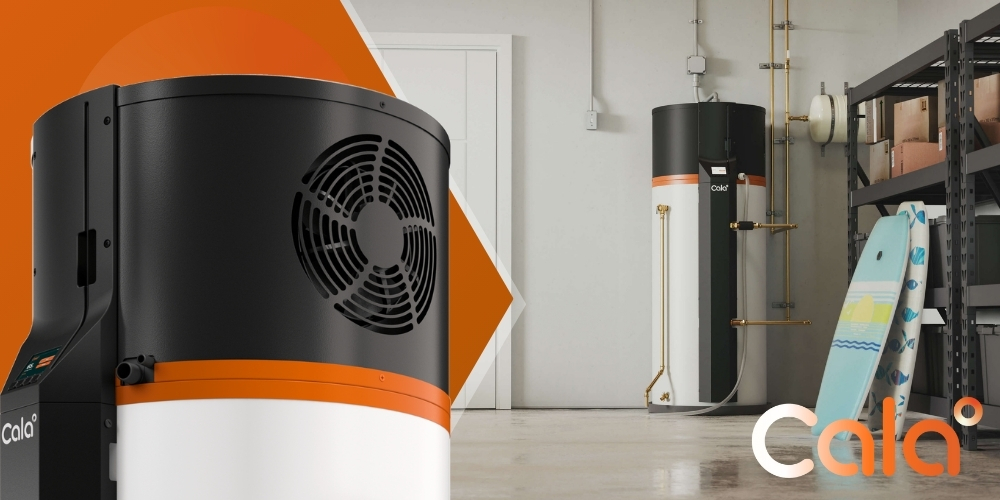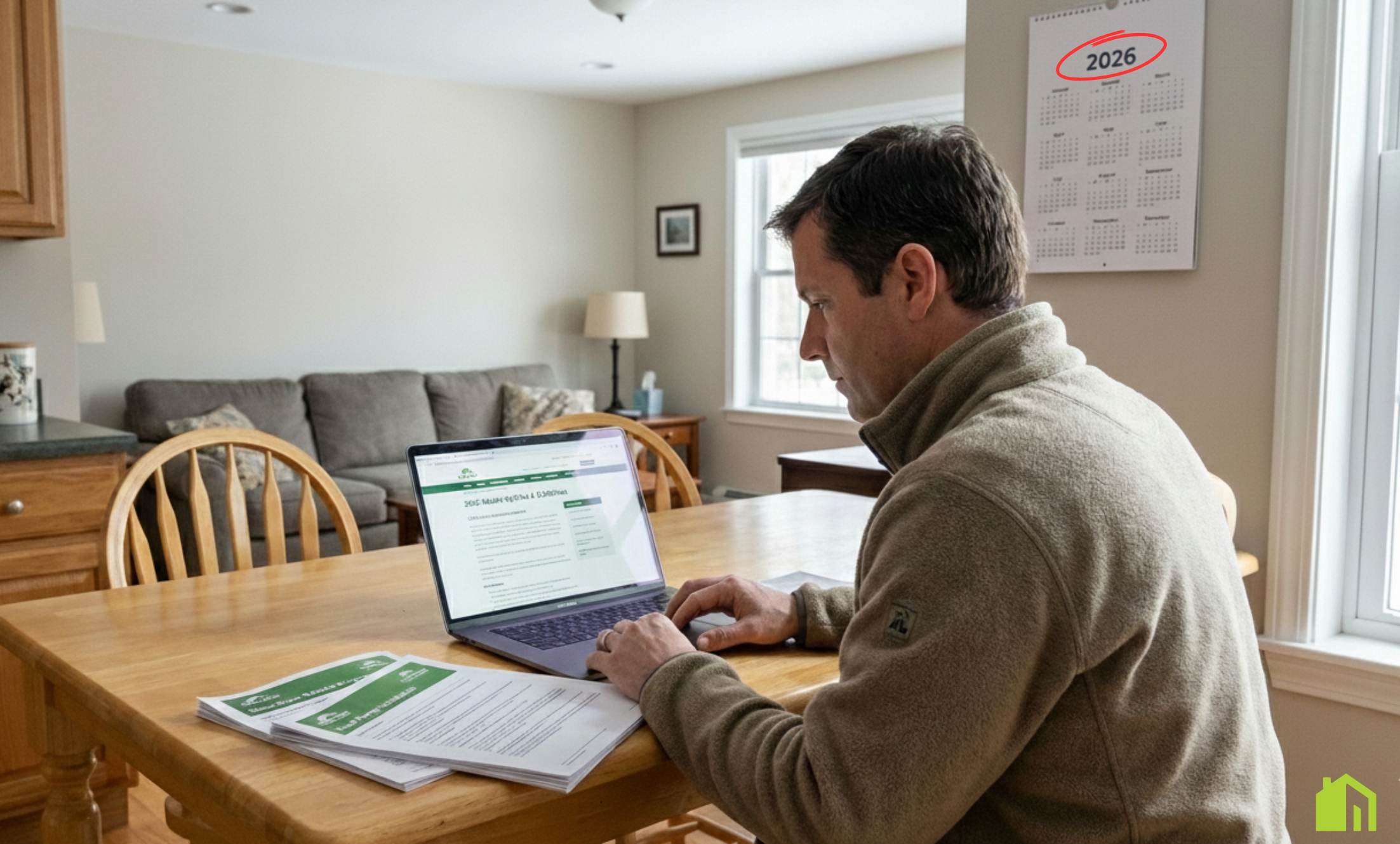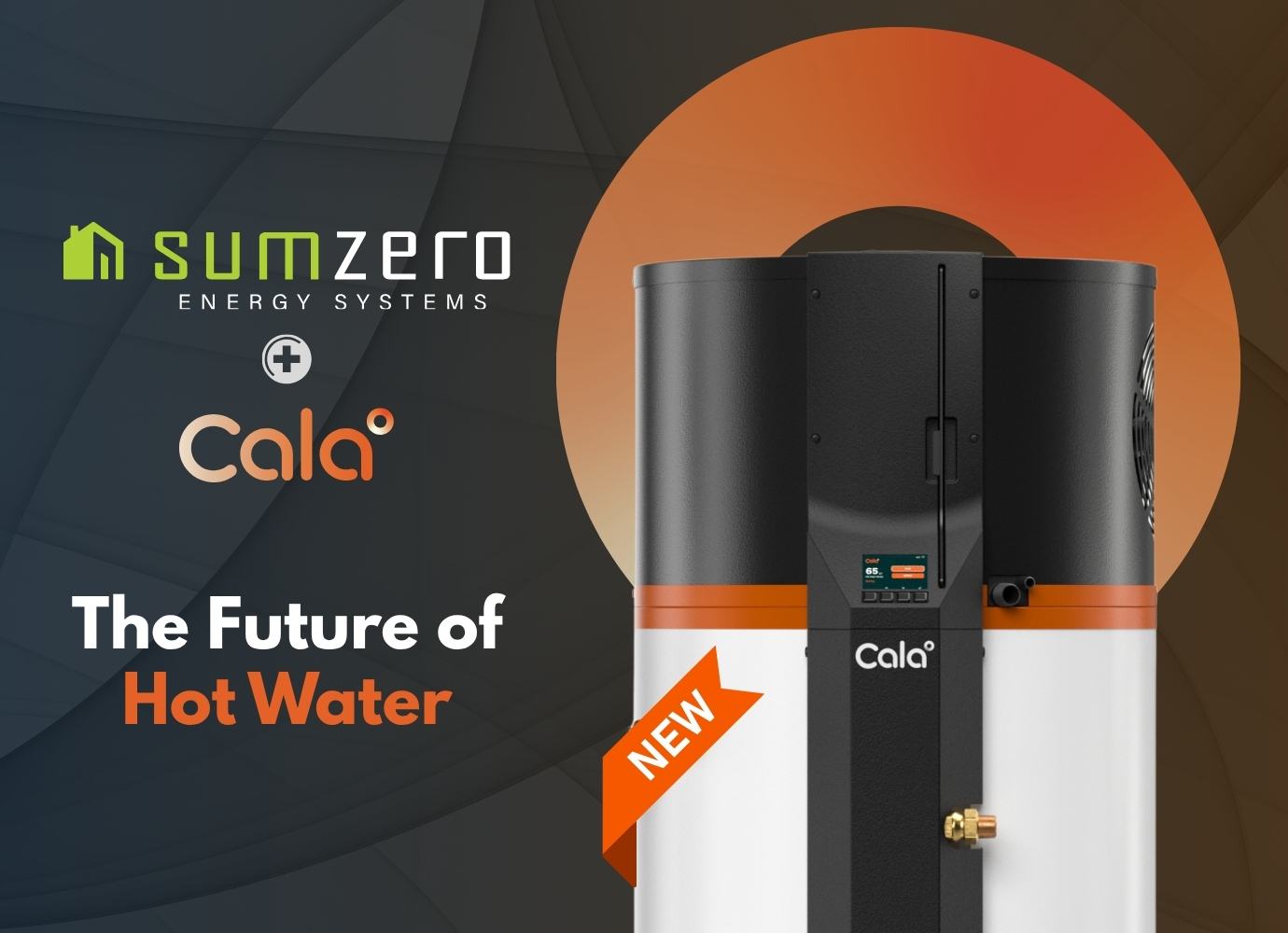The Homeowner’s Guide to the 25C Heat Pump Tax Credit

Intelligent Heat Pump Water Heaters for Massachusetts Residential Homes — Why SumZero Selects Cala
By SumZero Energy Systems — Massachusetts’ #1 Heat Pump Installation Team
Picking a new water heater once involved a simple decision between gas and standard old electric, praying the hot water wouldn't be gone when there were two showers in a row. That's no longer the case. Now, the ideal solution for the majority of Massachusetts homes is a smart heat pump water heater (HPWH). This isn't the typical hybrid of which you might have heard, but a rather new breed of unit that adapts to your home's schedule, accommodates your energy usage, and maintains comfort consistently while consuming a lot less energy.
When homeowners want to have it exactly right the first time, our team is discerning about what products we choose. We consider the landscape and inspect the details before determining that they might work with Cala, a company that produces a high-technology hot water heater that modern homes need: intelligent, consistent, and efficient hot water — installed properly. This article describes why this alliance matters, how the tech benefits your home, what you should expect from our installation, and the handy information (rebates, credits, fit questions) homeowners inquire about daily.
Why This Alliance Is Important
(and What It Does for You)
There are two parts to a successful hot water solution:
Great technology
A system that makes you comfortable and uses less energy.
Great installation
Design, placement, airflow, electrical, condensate handling, commissioning, and long-term support.
Cala provides a tailor-built, smart HPWH platform. SumZero provides actual-world experience so that it works perfectly in real Massachusetts homes.
Together, we provide three things homeowners report wanting:
Accurate hot water at peak periods without guessing.
Cheaper monthly energy bills without compromise on comfort.
It is a future-proof solution that addresses the trend towards greener, all-electric homes.
Simply put: We get hot water. We know how to properly install heat pump technology. This combination makes a water heater upgrade a smart, long-term decision.
The Homeowner's Dilemma That We Are
If you have had a gas or a typical electric water heater, then you know the problems:
Hot-cold swings on hectic morning routines.
Higher electricity bills than hoped for.
No real insight, no real control.
A replace cycle that is experienced as "buying the same thing again."
Typical hybrid: Heat pump water heaters perform better, yet they still react: They delay until the tank cools off, then warm it up again. Homeowners averred they desire a system which thinks ahead—a unit which is a breeze to operate, handles peak load graciously, and does not make them compromise.
They fill that gap, which is why we work with them.

Why a Smart HPWH is Different
A standard electric water heater makes heat by passing an electric element, a giant toaster coil, through the tank. A heat pump water heater does it another way: it takes heat from the air it lives in and puts it into the water. Because it costs less energy to move heat than create it, heat pump water heaters run on much less power than typical electric ones. And they avoid burning gas, venting, and pollution.
A smart HPWH goes one step further:
It adapts to your home's schedule (morning showers, nighttime laundry) and preheats when demand isn't yet high.
You can use the app to check, plan, or increase hot water whenever you want.
It has a compressor that can change speed to fit what you need (not just "on/off").
It is achievable with a mixing valve holding water at the proper warmth for improved efficiency and then providing a sustained, safe warmth for usage. This is also possible with the availability of additional warm water at peak usage times.
It goes nicely with a contemporary home — primed for solar, time-of-use, and information you can view at a glance.
Result: more stable comfort, less energy use, improved control.
Why a Smart HPWH is Different
From what is visible on-site, there are three things certain for homeowners regarding the points of Cala:
1) Ease That Is Effortless
Consistent hot water at peak use is the ultimate test. Through forecasting demand and using a mixing valve, Cala maintains a steady supply. That results in less "uh oh" when two showers coincidentally happen at once or someone turns on the dishwasher.
2) Controls That You'll Ever Use
App functionality is key when done properly. You can check if there's hot water, turn up the heat for guests, view energy usage history, or simply set it and leave. As installers, we appreciate performance data — it allows us to address little issues before large ones form.
3) Future-Ready from Day One
Massachusetts is going towards clean, electricity-based homes. Cala's strategy combines well: it is scalable for solar power and accounts for time-of-use rates when needed. If you foresee solar energy at some time, or already have it, this water heater won't stop your home from being efficient.
4) A Company That Stands Behind Its Product
Cala backs every unit with a 10-year parts warranty and 3-year labor warranty — a strong sign they stand behind both the technology and the people who install it. At SumZero, we respect that kind of commitment because it mirrors our own approach: taking care of homeowners and supporting our partners with the same level of trust and accountability.
What SumZero Offers As Your Installer
(Why It Matters)
Even the best system won't work so great if installed wrong. Our task is getting your new HPWH working perfectly inside your home, not on a drawing board. This is what our approach is:
Right-size design.
We measure how much water your home needs and discuss the high-flow fixtures, filling bathtubs, and washer usage.
Best installation and ventilation.
HPWHs require air to make the heat move. We consider the room size, doors, vents, and — when necessary — ducting solutions for high performance and low noise.
Clean handling of electricity and condensate.
Safe power, tidy routing, and a trustworthy drainage plan are essential.
Commissioning correctly.
We don't just "turn it on." We verify performance, position the mixing valve, help you with the app, and verify your comfort objectives.
Rebates, credits, and financial assistance.
Mass Save, federal 25C, and the 0% HEAT Loan (if applicable) — we'll help you with that.
We take special care.
Our teams respect your home, protect your floors, and leave the place nicer than they found it.
Aftercare you can count on. Questions years down the road? We're here. The whole concept of a smart system is long-term confidence, not a one-day installation.
Costs, Incentives, and Lifetime Value
Two parts matter here: upfront cost and operating cost.
→ It is a better unit than a standard electric or simple hybrid. Tax credits and rebates make a big difference. A lot of Massachusetts homeowners rely on the 0% HEAT Loan for easier payments.
→ Month after month, the intelligent HPWH's effectiveness is where the value lies. By transferring (not creating) heat and by scheduling heating intelligently, homeowners consistently experience significant decreases in water-heating energy consumption — particularly relative to resistance electric, and many times relative to gas or delivered fuels when full costs are factors.
If you'd like figures specific to your home (household number, showering usage, energy costs), we'll do the math at your consult and provide you with a clear estimate of payback, lifetime cost saving, and the rebates for which you qualify.
Are Smarter Heat Pump Water Heaters Good for Your Home?
It is feasible for many Massachusetts homes. We will cover:
→ Household size and routines. Families with up to about 5 people usually do well with the standard setup; we will give advice for larger families or special situations.
→ Space and ventilation. We check the space, door vents, or ducts if necessary, and ventilation so the system operates properly.
→ Location. Basements are typical, as are utility rooms. As the unit functions, it removes air that feels like a dehumidifier — a typical plus for basements.
→ Electrical. We check panel capacity and proper wiring; no installation day surprises.
→ Future plans. Now or in the future for solar? Time-of-use rates? We'll put the system on so it grows with your home.
[[cta-heatpump]]
Why Is Cala Different from "Traditional Hybrids"?
✪ Control and Convenience:
Cala integrates intelligent tech with a mixing valve to remain comfortable, even when it is busy. Most standard hybrid units have simple modes and react only when the tank becomes chilled.
✪ Care and Trust:
Performance insights help you recognize problems early on and keep you on your feet for surprises. Traditional deployments are mostly "wait and see."
✪ Timing and Efficiency:
Variable driving and improved scheduling assist in energy saving with the maintenance of comfort. Ordinary hybrids operate more often and at undesirable times.
✪ Future-Ready
The design of the Cala accommodates with solar power, intelligent homes, and plans for utilizing electricity. Most older hybrids were not built for that usage.

What to Expect with SumZero
(From the First Call Through the First Shower)
✪ Talk & Pictures
We'll first glance at your objectives and take some fast photos of the current installation: the water heating unit, panel, and surrounding room.
✪ Right-Fit Design
We fit your hot water consumption and available spaces to a design which we endorse.
✪ Chaplain: A Comprehensive
Your quote is going to be transparent, includes information for installation, accessories, and a checklist for incentives. The paperwork assistance takes care of our end.
✪ Professional Installation
Licensed, insured, and detail-orientated. We dispose of the old unit, prepare the site, install and commission a new system, and leave the site tidy.
✪ App Introduction and Instructions
You'll discover how to see hot water supply, schedule increases, and view consumption — without being "technical."
✪ Support and Help
We're your long-term partner. Got a question? You call us — that's what homeowners deserve from the #1 heat pump installation company.
Common Questions We Get
(And Easy Answers)
Smart heat pump water heaters move heat from the surrounding air into the water instead of generating heat directly. This makes them up to three to four times more efficient than standard electric models. Cala’s intelligent system takes it further — it learns your household’s patterns, preheats before busy periods, and gives you app-based control to monitor or boost hot water anytime.
Most hybrid water heaters react when the tank cools. Cala predicts when your home will need hot water and heats proactively, saving more energy while maintaining comfort. It also features a variable-speed compressor, integrated mixing valve, and performance monitoring portal, giving both homeowners and installers a smarter, more reliable experience.
Savings depend on your energy source and usage, but many Massachusetts homeowners cut their water-heating costs by 50–70% when switching to a heat pump system. Cala’s intelligent controls add even greater efficiency. Add Mass Save® rebates, federal 25C tax credits, and potential 0% HEAT Loan financing, and most families see real payback within just a few years.
Yes — most Massachusetts homes are a great fit. Cala’s 65-gallon design comfortably serves households up to five people and can prepare up to 90 gallons ahead of peak use. The system needs adequate space and airflow, similar to a dehumidifier, and our team at SumZero handles every detail — from placement and ducting to electrical and performance checks.
SumZero Energy Systems is Massachusetts’ #1 heat pump installation team, trusted for precision, transparency, and high-quality service. We manage every step — design, installation, rebate paperwork, app setup, and long-term maintenance — so homeowners enjoy smarter comfort and lasting confidence. With SumZero, you’re not just buying equipment; you’re gaining a partner who stands behind it.
Why We Feel Secure Recommending This to Massachusetts Homeowners
We have a simple promise: we only install solutions that we would use in our own homes. Cala’s approach — being smart, having control, and being ready for the future — matches what we have learned from many talks with homeowners in the state. Together with SumZero’s careful installation standards and ongoing support, this water-heating upgrade makes sense right away and will last well with your home. Cleaner heat. Smarter comfort. Fewer bills.
Ready to Take the Next Step?

To learn more about Cala’s technology and vision, visit Cala Systems.
Understanding the 25C Tax Credit: What It Means for Massachusetts Homeowners
If you're a Massachusetts homeowner considering energy-efficient upgrades, the 25C tax credit could be a game-changer. This federal incentive helps reduce the upfront cost of installing qualifying heat pumps—so you can enjoy lower utility bills, increased comfort, and a smaller carbon footprint.
What Is the 25C Tax Credit?
At its core, the 25C tax credit—officially known as the Energy Efficient Home Improvement Credit—is designed to encourage homeowners to invest in clean energy technologies.
Here’s what makes it valuable:
- It offers up to 30% of the total installed cost of qualifying heat pumps
- Homeowners can claim a maximum of $2,000 per year
- Applies to primary residences only—not rentals or second homes
Many homeowners in Massachusetts overlook the fact that the 25C credit renews annually, allowing them to spread upgrades across multiple tax years and still qualify.
Eligibility Basics
To qualify for the credit, your installation must meet specific criteria:
- The heat pump must be ENERGY STAR certified
- Installation must occur in an existing home, not new construction
- Work must be completed after January 1, 2023
Don’t forget: You still need to claim the credit when you file your federal tax return. Keep receipts and certifications for recordkeeping.
Why Massachusetts Residents Should Pay Extra Attention
Massachusetts energy costs are among the highest nationwide. That’s why state residents have more to gain from energy efficiency.
Consider this:
- Heat pumps cut heating bills by 20–40% in typical New England homes
- Replacing heating oil or propane systems can yield even higher savings
- Qualifying for both the federal rebate and local programs like Mass Save® can significantly reduce out-of-pocket expenses
Massachusetts homes heated with oil can see some of the fastest payback periods when switching to qualified heat pumps.
Maximizing Your Federal Rebate with Energy Star Compliance
Getting the 25C tax credit starts with choosing the right system. ENERGY STAR certification isn’t optional—it’s key to unlocking the benefit.
What ENERGY STAR Compliance Involves
ENERGY STAR standards ensure that the heat pump meets strict energy-efficiency guidelines set by the U.S. Environmental Protection Agency.
To be compliant:
- Choose a heat pump model labeled as ENERGY STAR Most Efficient
- Match your system size to your home’s square footage and insulation
- Install in accordance with manufacturer specifications
Name-brand systems like Mitsubishi Electric or Daikin often offer a wide range of qualifying models. But always double-check specifications provided on the ENERGY STAR program site or through Mass Save® resources.
Choosing the Right System for Massachusetts Seasons
New England winters are no joke. Make sure the system you pick works efficiently in colder climates.
Look for:
- Cold climate heat pump models
- Dual-fuel systems if heating needs are intense
- Variable-speed compressors for better temperature control
A tailored approach ensures you’ll stay warm during those Nor’easters while meeting energy-efficiency benchmarks.
The biggest missed opportunity? Failing to check if your model is eligible for both the 25C credit and local rebates—some units qualify for both, maximizing your benefits.
[[cta-heatpump]]
How to Claim Your Energy Tax Credit Step by Step
You’ve installed a qualifying heat pump—now what? Claiming your 25C tax credit isn’t hard, but you’ll want to follow a few simple steps to ensure you get the full benefit.
Step 1: Save All Your Paperwork
Keep copies of the following:
- Proof of purchase and installation
- Manufacturer certification statement (typically issued by the brand)
- Signed permits or inspection forms where applicable
Having these on hand makes filing easier and can protect your claim in case of an audit.
Step 2: File IRS Form 5695
This is the official form used to claim residential energy credits.
Here’s how to do it:
- Download IRS Form 5695 from the IRS website
- Fill out Part II for energy-efficient home improvements
- Enter the cost of your qualifying equipment up to $2,000
- Submit it along with your federal tax return
Married filers can claim the full $2,000 even if filing jointly—as long as the home is jointly owned and occupied.
Step 3: Coordinate with Local Rebates
Don’t forget that Massachusetts offers programs like Mass Save® which can be stacked with the 25C credit.
Before you file:
- Check that your home isn’t already claimed under a local utility incentive that disqualifies a federal credit
- Reach out to Mass Save® or Eversource for up-to-date program details
Knowing which incentives can be combined ensures you don’t leave money on the table.
Make the Most of the Clean Energy Credit in 2024 and Beyond
Upgrading your home with a qualified heat pump isn’t just good for the environment—it’s increasingly affordable thanks to clean energy credits like the 25C.
By understanding how to:
- Select the right ENERGY STAR model
- Coordinate with local rebates
- Claim your federal rebate accurately
You’ll set your home up for long-term comfort and savings.
The 25C credit is expected to remain in place for several years, but the sooner you act, the sooner you’ll benefit from reduced energy bills and improved home value.
Whether you're ready to make the switch now or planning for next season, taking advantage of the 25C heat pump tax credit positions you to stay ahead—saving money while reducing your carbon footprint right here in Massachusetts.
Discover how the 25C tax credit can slash your heat pump installation costs and energy bills—learn which ENERGY STAR models qualify and how to stack savings with local rebates in Massachusetts.
Claim Your Energy CreditYou Might Also Like…
Continue learning with handpicked articles that inform and inspire.
Not Sure Where to Start? We’ll Guide You
Let our experts design the right heating and cooling solution—customized for your comfort, your layout, and your energy goals. No pressure. Just clarity.
Request FREE ESTIMATE









